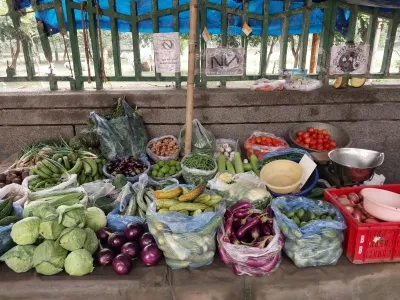Retail Inflation in India Drops to 3.6% in February, a 7-Month Low

Synopsis
Key Takeaways
- Inflation rate dropped to 3.61% in February 2023.
- Food inflation reached its lowest level since May 2023.
- Vegetables, eggs, and pulses saw significant price declines.
- Fuel prices also decreased, easing household budgets.
- RBI signaled possible rate cuts to boost growth.
New Delhi, March 12 (NationPress) The year-on-year inflation rate, based on the Consumer Price Index (CPI), has decreased to a 7-month low of 3.61 percent in February 2023, marking a reduction of 0.65 percent compared to January's figure, driven by a decline in food prices throughout the month. This is the lowest retail inflation recorded since July 2024.
In February, food inflation reached its lowest point since May 2023, being 222 basis points lower than January's rate, as reported in the official statement.
The notable drop in both headline and food inflation for February can be largely attributed to a decrease in the prices of vegetables, eggs, meat & fish, pulses, and milk & dairy products.
The key items with the lowest year-on-year inflation in February included ginger (-35.81 percent), jeera (-28.77 percent), tomato (-28.51 percent), cauliflower (-21.19 percent), and garlic (-20.32 percent), according to official data.
Additionally, fuel prices declined during the month, alleviating the financial strain on households, with fuel inflation recorded at (-) 1.33 percent in February.
As retail inflation continues its downward trend and falls below the RBI’s targeted level of 4 percent, the central bank may have greater flexibility to implement a rate cut aimed at boosting economic growth and job creation.
RBI Governor Sanjay Malhotra announced a 25 basis point cut in the policy rate from 6.5 percent to 6.25 percent during the monetary policy review last month to stimulate growth amid global uncertainties.
He noted that inflation has decreased and is projected to further moderate, gradually aligning with the RBI’s target of 4 percent.
The monetary policy decision aims to maintain a careful balance between controlling inflation and promoting a higher growth rate in a slowing economy.
The MPC also unanimously agreed to uphold its neutral monetary policy stance, focusing on inflation while supporting growth. This strategy will allow flexibility in responding to the macroeconomic environment, Malhotra stated.









